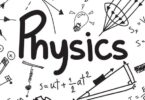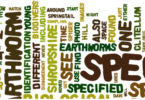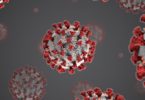Electric Field and Potential Multiple Choice Questions:
Ques: Charges 4Q, q and Q and placed along x-axis at positions x = 0, x = l/2 and x = l, respectively. Find the value of q so that force on charge Q is zero
(a) Q
(b) Q / 2
(c) – Q / 2
(d) – Q
Ques: Equipotential surfaces associated with an electric field which is increasing in magnitude along the x-direction are
(a) Planes parallel to yz-plane
(b) Planes parallel to xy-plane
(c) Planes parallel to xz-plane
(d) Coaxial cylinders of increasing radii around the x-axis
Ques: Three point charges are placed at the corners of an equilateral triangle. Assuming only electrostatic forces are acting
(a) The system can never be in equilibrium
(b) The system will be in equilibrium if the charges rotate about the centre of the triangle
(c) The system will be in equilibrium if the charges have different magnitudes and different signs
(d) The system will be in equilibrium if the charges have the same magnitudes but different signs
Ques: Value of potential at a point due to a point charge is
(a) Inversely proportional to square of the distance
(b) Directly proportional to square of the distance
(c) Inversely proportional to the distance
(d) Directly proportional to the distance
Related: d and f block elements question bank
Ques: When a positive q charge is taken from lower potential to a higher potential point, then its potential energy will
(a) Decrease
(b) Increases
(c) Remain unchanged
(d) Become zero
Ques: When one electron is taken towards the other electron, then the electric potential energy of the system
(a) Decreases
(b) Increases
(c) Remains unchanged
(d) Becomes zero
Ques: Work done in moving a positive charge on an equipotential surface is
(a) Finite, positive but not zero
(b) Finite, negative but not zero
(c) Zero
(d) Infinite
Ques: Two charge +q and –q are situated at a certain distance. At the point exactly midway between them
(a) Electric field and potential both are zero
(b) Electric field is zero but potential is not zero
(c) Electric field is not zero but potential is zero
(d) Neither electric field nor potential is zero
Ques: A mass m = 20 g has a charge q = 3.0 mC. It moves with a velocity of 20 m/s and enters a region of electric field of 80 N/C in the same direction as the velocity of the mass. The velocity of the mass after 3 seconds in this region is
(a) 80 m/s
(b) 56 m/s
(c) 44 m/s
(d) 40 m/s
Related: mcq synthetic fibres and plastics
Ques: A particle has a mass 400 times than that of the electron and charge is double than that of a electron. It is accelerated by 5V of potential difference. Initially the particle was at rest, then its final kinetic energy will be
(a) 5 eV
(b) 10 eV
(c) 100 eV
(d) 2000 eV
Ques: A cube of side b has a charge q at each of its vertices. The electric field due to this charge distribution at the centre of this cube will be
(a) q/b2
(b) q/2b2
(c) 32 q/b2
(d) Zero
Ques: A point charge is kept at the centre of a metallic insulated spherical shell. Then
(a) Electric field out side the sphere is zero
(b) Electric field inside the sphere is zero
(c) Net induced charge on the sphere is zero
(d) Electric potential inside the sphere is zero
Ques: Two charges +4e and +e are at a distance x apart. At what distance, a charge q must be placed from charge +e so that it is in equilibrium
(a) x/2
(b) 2x/3
(c) x/3
(d) x/6
Ques: The unit of intensity of electric field is
(a) Newton/Coulomb
(b) Joule/Coulomb
(c) Volt – metre
(d) Newton / metre
Related: fluid mechanics objective questions with answers
Ques: If a charged spherical conductor of radius 10 cm has potential V at a point distant 5 cm from its centre, then the potential at a point distant 15 cm from the centre will be
(a) 1/3 V
(b) 2/3 V
(c) 3/2 V
(d) 3V
Ques: A simple pendulum of period T has a metal bob which is negatively charged. If it is allowed to oscillate above a positively charged metal plate, its period will
(a) Remains equal to T
(b) Less than T
(c) Greater than T
(d) Infinite
Ques: An electron enters between two horizontal plates separated by 2mm and having a potential difference of 1000V. The force on electron is
(a) 8 x 10–12 N
(b) 8 x 10–14 N
(c) 8 x 109 N
(d) 8 x 1014 N
Ques: The electric charge in uniform motion produces
(a) An electric field only
(b) A magnetic field only
(c) Both electric and magnetic field
(d) Neither electric nor magnetic field
Ques: At a certain distance from a point charge the electric field is 500 V/m and the potential is 3000 V. What is this distance
(a) 6m
(b) 12 m
(c) 36 m
(d) 144 m
Related: fractions questions and answers
Ques: The work done in bringing a 20 coulomb charge from point A to point B for distance 0.2m is 2J. The potential difference between the two points will be (in volt)
(a) 0.2
(b) 8
(c) 0.1
(d) 0.4
Ques: The electric field inside a spherical shell of uniform surface charge density is
(a) Zero
(b) Constant, less than zero
(c) Directly proportional to the distance from the centre
(d) None of the above
Ques: A conductor with a positive charge
(a) Is always at +ve potential
(b) Is always at zero potential
(c) Is always at negative potential
(d) May be at +ve, zero or –ve potential
Ques: Two insulated charged conducting spheres of radii 20 cm and 15 cm respectively and having an equal charge of 10 C are connected by a copper wire and then they are separated. Then
(a) Both the spheres will have the same charge of 10 C
(b) Surface charge density on the 20 cm sphere will be greater than that on the 15 cm sphere
(c) Surface charge density on the 15 cm sphere will be greater than that on the 20 cm sphere
(d) Surface charge density on the two spheres will be equal
Ques: Two metal pieces having a potential difference of 800 V are 0.02 m apart horizontally. A particle of mass 1.96 x 10–15 kg is suspended in equilibrium between the plates. If e is the elementary charge, then charge on the particle is
(a) e
(b) 3e
(c) 6e
(d) 8e
Related: Endocrine system quiz
Ques: Two point charges +9e and +e are at 16 cm away from each other. Where should another charge q be placed between them so that the system remains in equilibrium
(a) 24 cm from +9e
(b) 12 cm from +9e
(c) 24 cm from +e
(d) 12 cm from +e
Ques: The radius of a soap bubble whose potential is 16V is doubled. The new potential of the bubble will be
(a) 2V
(b) 4V
(c) 8V
(d) 16V
Ques: Point charges +4q, –q and +4q are kept on the x–axis at points x = 0, x = a and x = 2a respectively, then
(a) Only q is in stable equilibrium
(b) None of the charges are in equilibrium
(c) All the charges are in unstable equilibrium
(d) All the charges are in stable equilibrium
Ques: A drop of 10–6 kg water carries 10–6 C charge. What electric field should be applied to balance its weight (assume g = 10 m/s2)
(a) 10 V/m upward
(b) 10 V/m downward
(c) 0.1 V/m downward
(d) 0.1 V/m upward
Related: Physical quantities and measurement quiz
Ques: Two spheres A and B of radius ‘a’ and ‘b’ respectively are at same electric potential. The ratio of the surface charge densities of A and B is
(a) a/b
(b) b/a
(c) a2 / b2
(d) b2/a2
Ques: Electric lines of force about negative point charge are
(a) Circular, anticlockwise
(b) Circular, clockwise
(c) Radial, inward
(d) Radial, outward
Ques: Consider two point charges of equal magnitude and opposite sign separated by a certain distance. The neutral point due to them
(a) Does not exist
(b) Will be in mid way between them
(c) Lies on the perpendicular bisector of the line joining the two
(d) Will be closer to the negative charge
Ques: The acceleration of an electron in an electric field of magnitude 50 V/cm, if e/m value of the electron is 1.76 x 1011C/kg, is
(a) 8.8 x 1014 m/sec2
(b) 6.2 x 1013 m/sec2
(c) 5.4 x 1012 m/sec2
(d) Zero
Ques: A spherical conductor of radius 2m is charged to a potential of 120 V. It is now placed inside another hollow spherical conductor of radius 6m. Calculate the potential to which the bigger sphere would be raised
(a) 20 V
(b) 60 V
(c) 80 V
(d) 40 V






